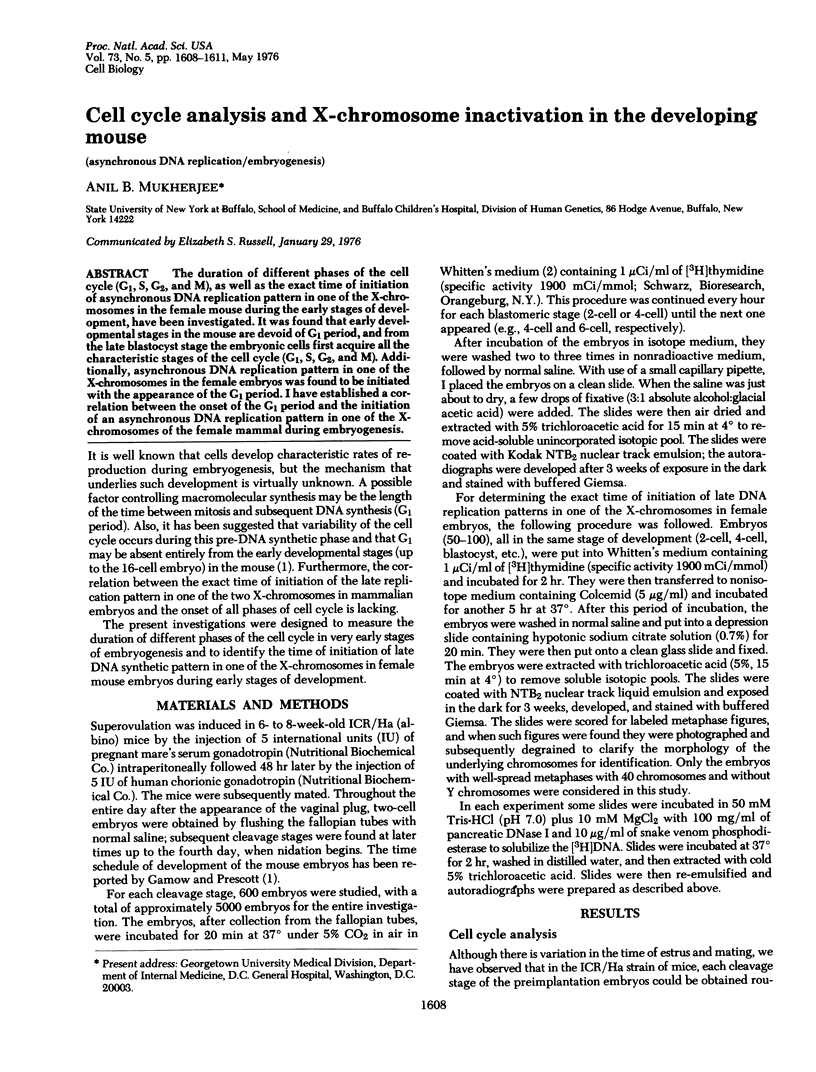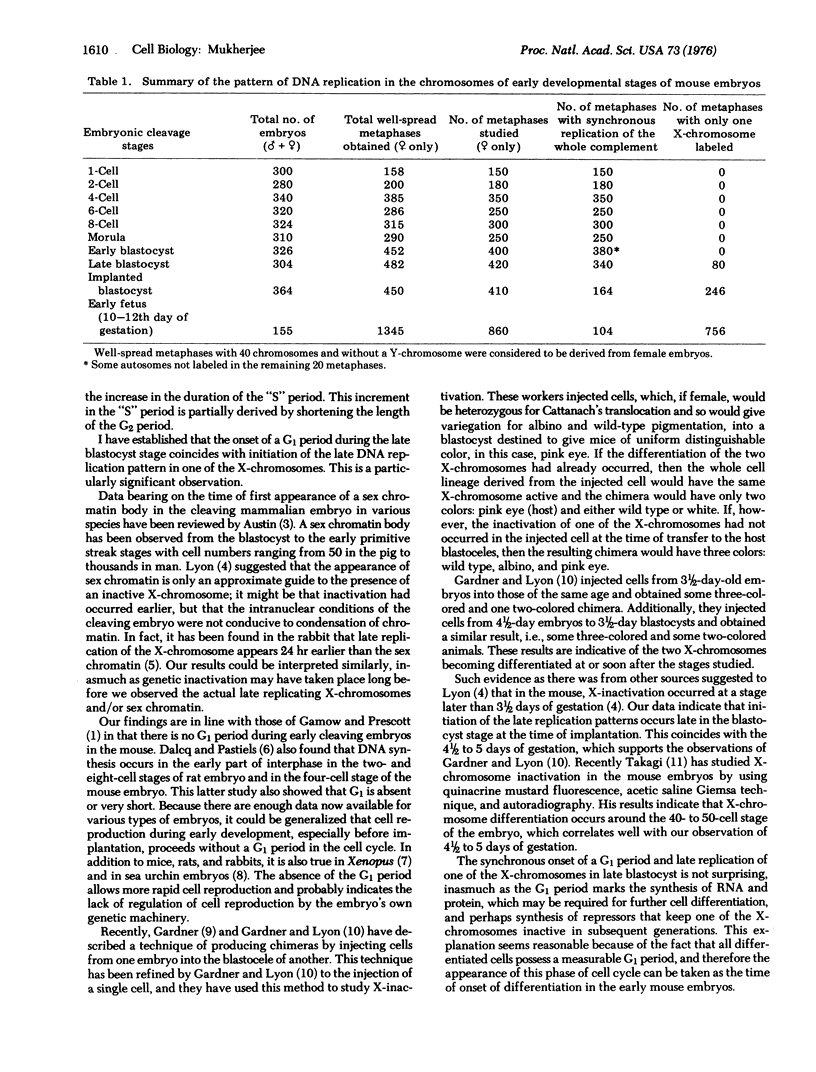Abstract
The duration of different phases of the cell cycle (G1, S, G2, and M), as well as the exact time of initiation of asynchronous DNA replication pattern in one of the X-chromosomes in the female mouse during the early stages of development, have been investigated. It was found that early developmental stages in the mouse are devoid of G1 period, and from the late blastocyst stage the embryonic cells first acquire all the characteristic stages of the cell cycle (G1, S, G2, and M). Additionally, asynchronous DNA replication pattern in one of the X-chromosomes in the female embryos was found to be initiated with the appearance of the G1 period. I have established a correlation between the onset of the G1 period and the initiation of an asynchronous DNA replication pattern in one of the X-chromosomes of the female mammal during embryogenesis.
Full text
PDF



Images in this article
Selected References
These references are in PubMed. This may not be the complete list of references from this article.
- Gamow E. I., Prescott D. M. The cell life cycle during early embryogenesis of the mouse. Exp Cell Res. 1970 Jan;59(1):117–123. doi: 10.1016/0014-4827(70)90630-0. [DOI] [PubMed] [Google Scholar]
- Gardner R. L., Lyon M. F. X chromosome inactivation studied by injection of a single cell into the mouse blastocyst. Nature. 1971 Jun 11;231(5302):385–386. doi: 10.1038/231385a0. [DOI] [PubMed] [Google Scholar]
- Gardner R. L. Mouse chimeras obtained by the injection of cells into the blastocyst. Nature. 1968 Nov 9;220(5167):596–597. doi: 10.1038/220596a0. [DOI] [PubMed] [Google Scholar]
- HINEGARDNER R. T., RAO B., FELDMAN D. E. THE DNA SYNTHETIC PERIOD DURING EARLY DEVELOPMENT OF THE SEA URCHIN EGG. Exp Cell Res. 1964 Oct;36:53–61. doi: 10.1016/0014-4827(64)90159-4. [DOI] [PubMed] [Google Scholar]
- Issa M., Blank C. E., Atherton G. W. The temporal appearance of sex chromatin and of the late-replicating X chromosome in blastocysts of the domestic rabbit. Cytogenetics. 1969;8(3):219–237. doi: 10.1159/000130064. [DOI] [PubMed] [Google Scholar]
- Lyon M. F. X-chromosome inactivation and developmental patterns in mammals. Biol Rev Camb Philos Soc. 1972 Jan;47(1):1–35. doi: 10.1111/j.1469-185x.1972.tb00969.x. [DOI] [PubMed] [Google Scholar]
- Takagi N. Differentiation of X chromosomes in early female mouse embryos. Exp Cell Res. 1974 May;86(1):127–135. doi: 10.1016/0014-4827(74)90657-0. [DOI] [PubMed] [Google Scholar]
- Whitten W. K., Biggers J. D. Complete development in vitro of the pre-implantation stages of the mouse in a simple chemically defined medium. J Reprod Fertil. 1968 Nov;17(2):399–401. doi: 10.1530/jrf.0.0170399. [DOI] [PubMed] [Google Scholar]



